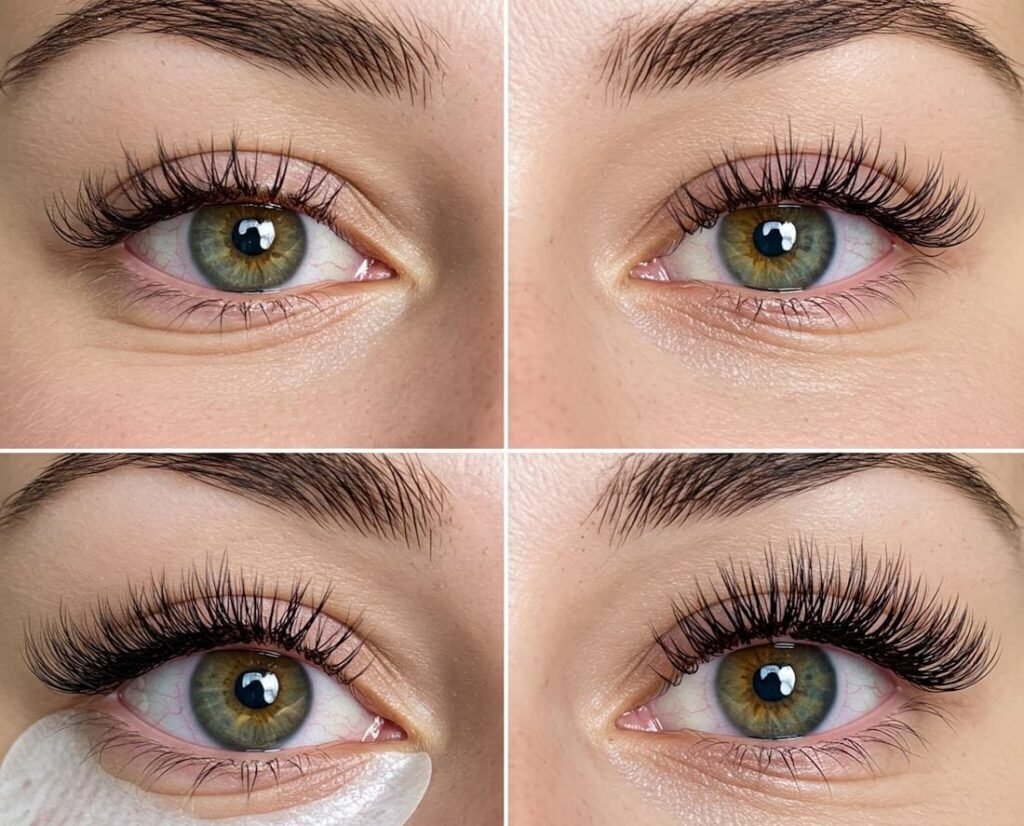Regular haircuts are a fundamental aspect of maintaining healthy hair as well as a polished appearance. The frequency with which one should cut their hair can greatly vary based on several factors, including hair type, growth rate, and individual style preferences. Generally speaking, it is advisable to have a haircut every six to eight weeks for those with shorter hairstyles, as this timeframe helps in preventing split ends and supporting a fresh look. Conversely, individuals with longer hair may opt to schedule cuts every eight to twelve weeks, depending on the condition of their hair and the style they wish to maintain.
Personal lifestyle choices can also significantly influence how often a haircut is necessary. For example, if an individual frequently uses heat styling tools or chemical treatments, a more regular haircut may be prescribed to mitigate damage. Additionally, those who engage in activities that expose their hair to environmental stressors should also consider increasing their haircut frequency.
Another critical aspect is the natural growth rate of hair, which can differ from person to person. On average, hair grows approximately half an inch per month. Consequently, individuals who aim for a specific hairstyle or length must consider their growth rate and the desired outcome when determining the timing of their haircuts.
Moreover, personal preferences play a significant role in deciding how often to cut hair. Some individuals thrive on change and may prefer more frequent visits to the salon, while others might favor a more laid-back approach. It is important to find a balance that aligns with one’s lifestyle and hair needs. Overall, understanding these factors can help individuals make informed decisions about their hair cutting frequency, ultimately promoting healthier hair and enhancing one’s overall appearance.
Factors Influencing Hair Cutting Frequency
Determining how often to cut your hair can be influenced by several factors. One of the primary considerations is hair type, which includes classifications like straight, curly, and coily. Straight hair tends to showcase split ends more visibly, prompting individuals with this hair type to consider more frequent trims, generally every six to eight weeks. In contrast, curly and coily hair types often require less frequent cuts due to their natural texture and ability to hide split ends more effectively, with trims recommended every eight to twelve weeks.
Another critical aspect is hair texture. Fine hair can become damaged more easily, making it essential to cut it regularly—usually every four to six weeks—to maintain its shape and health. Medium texture hair is relatively resilient and may only require cutting every six to ten weeks. Coarse hair, known for its durability, can often sustain longer intervals between cuts, potentially extending the timeline to eight to twelve weeks, ensuring it retains its health while containing minimal damage.
Additionally, the overall health and condition of the hair play a significant role in determining cutting frequency. Hair that has been subjected to chemical treatments, such as coloring or perming, may necessitate more frequent trims to mitigate potential damage and maintain a healthy look. Healthy hair, lacking significant damage or breakage, can typically thrive with longer intervals between haircuts. Personal lifestyle factors also contribute to this decision; for instance, individuals who frequently style their hair with heat tools might require trims more often to counteract damage.
By understanding these factors—hair type, texture, overall health, and lifestyle—individuals can better assess their hair’s needs and establish a cutting frequency that aligns with their specific circumstances.
Standard Recommendations for Different Hair Types
When considering how often to cut your hair, it is essential to recognize that hair type significantly influences the frequency of haircuts. Each category—straight, wavy, curly, and coily hair—has distinct characteristics that dictate their respective maintenance requirements.
Straight hair typically needs trimming every 6 to 8 weeks. This regular haircut schedule helps maintain its shape and removes split ends, which can be more noticeable in straight textures. Additionally, straight hair tends to show damage more readily, making timely haircuts essential for a healthy appearance.
Wavy hair can usually afford a bit more time between cuts, with a recommended frequency of 8 to 12 weeks. Wavy textures benefit from preserving their natural movement and shape, and excessive cutting can lead to unwanted volume or frizz. Allowing for slightly longer intervals allows waves to retain their defined curls while still keeping the hair healthy.
For curly hair, professionals often suggest a haircut every 10 to 12 weeks. Curly hair is often drier and more prone to breakage, thus requiring a more balanced approach to trimming. Maintaining a specific cut can enhance the curls’ bounce and prevent damage, while longer intervals help in length retention.
Coily hair, known for its tight curls, generally needs even less frequent trims, recommended every 12 to 16 weeks. Coily hair’s unique structure makes it prone to shrinkage, which can often lead to an underestimation of its length. Therefore, frequent but measured trims can help maintain the health of the hair while allowing it to grow.
Ultimately, understanding your hair type and following these standard recommendations is crucial to achieving optimal hair health and style. By aligning your haircut frequency to your hair type, you can ensure that your hair remains manageable and looks its best.
Signs It’s Time for a Haircut
Maintaining healthy hair requires regular attention, and recognizing when it’s time for a haircut can significantly influence the overall appearance and health of your hair. One of the most common signs that a haircut is necessary is the presence of split ends. These occur when the protective outer layer of the hair cuticle wears away, leading to frayed ends that can, in turn, travel up the hair shaft, causing further damage. If you notice split ends, it’s advisable to schedule a haircut to prevent potential breakage.
Another indicator that you may need a trim is the lack of shape in your hairstyle. Over time, hair can lose its structure, making it appear limp or unstyled. Haircuts are essential not just for length, but also for maintaining the shape that frames your face and highlights your features. If your hair starts to look shapeless or heavy, it might be time to consult a professional stylist for a rejuvenating cut.
Excessive tangling is also a noteworthy sign that you should consider cutting your hair. When strands become unhealthy, they can matte together, resulting in knots that are difficult to comb through. This can lead to further damage and breakage, making it even more critical to take action and get a haircut to restore manageability.
Changes in hair texture can signify that your locks might benefit from a trim as well. Whether due to environmental factors, product buildup, or lack of moisture, altered hair texture can lead to a dull appearance. Therefore, if you notice significant changes in how your hair feels and behaves, it may be an essential cue to seek professional help and have your hair shaped accordingly.
Embracing Different Hair Styles Over Time
As individuals navigate through various phases of their lives, their hairstyle preferences often evolve. The frequency with which one should cut their hair can largely depend on the desired style. For instance, maintaining a bob—an iconic haircut—requires regular trims to ensure it retains its sharp contours and clean edges. Typically, a bob haircut may need attention every six to eight weeks to prevent it from losing its shape and to keep it looking polished and elegant.
On the other hand, for those who have opted for a trendy cut or a more intricate style, such as an undercut or textured layers, it is essential to adhere to specific trim schedules to preserve the style’s aesthetic appeal. It is generally recommended that individuals with trendy cuts return for maintenance every four to six weeks. Doing so not only ensures the style remains fresh but also prevents any unwanted overgrowth that detracts from the original haircut’s intention.
For individuals in the process of growing out short hair, the trimming frequency will differ. While the goal may be to achieve longer lengths, regular trims every 8 to 12 weeks can help eliminate split ends and promote overall hair health. This balanced approach allows for manageable growth while mitigating potential damage, ensuring that the hair maintains a healthy appearance throughout the growing process.
Embracing various hair styles over time requires patience and thoughtful consideration regarding haircut frequency. Each style presents its own set of maintenance guidelines, and understanding how often to trim hair according to the desired look is essential for achieving and sustaining a well-groomed appearance. Ultimately, the key lies in balancing personal style with hair health, promoting both confidence and aesthetic satisfaction.
Expert Tips for Hair Maintenance Between Cuts
Maintaining healthy hair between haircut appointments is essential for its overall appearance and longevity. Expert stylists recommend an array of practical tips designed to help individuals keep their hair vibrant and stylish in the interim. One cornerstone of effective hair maintenance lies in selecting the right products tailored to your specific hair type. Shampoo and conditioner should be chosen based on hair texture—whether straight, wavy, or curly—and any specific concerns such as dryness or oiliness. Products containing natural ingredients and free from sulfates, parabens, and synthetic fragrances are particularly beneficial, as they help to preserve the hair’s integrity.
Dealing with split ends is another critical aspect of home hair care. While the only true remedy for split ends is a trim, applying a lightweight leave-in conditioner or a specialized serum can help minimize their appearance. Using these products frequently can also create a protective barrier that aids in preventing further damage. For those who regularly heat style their hair, it is advisable to implement a heat protectant spray prior to using styling tools. This will shield the hair from high temperatures and minimize the risk of breakage.
Scalp health should not be overlooked in the quest for beautiful hair. An unhealthy scalp can impede hair growth and result in various issues such as dandruff or excessive oil production. Regularly massaging the scalp during shampooing can increase blood circulation and promote healthier follicles. Incorporating a clarifying shampoo once a month can also help remove buildup from products, ensuring the scalp remains clean and balanced.
Ultimately, by following these expert tips for hair maintenance, individuals can prolong the time between haircuts and achieve a healthy, stylish look. Consistency in caring for hair not only enhances its appearance but also contributes to overall hair health, making it easier to maintain well-groomed locks.
Cost Considerations for Frequent Haircuts
When considering how often to cut your hair, financial implications play a significant role in the decision-making process. The costs associated with haircuts can vary widely depending on several factors, including the type of salon, the expertise of the stylist, and your geographical location. Typically, a basic cut at a budget salon may cost around $20 to $30, while a visit to a more upscale salon can easily set you back $50 to $100 or more. Understanding these typical salon costs is essential for effectively managing your overall hair care budget.
Another factor to consider is the choice between visiting a barber or a stylist. Barbers generally offer straightforward haircuts at a lower price point and may be preferable for men or those with shorter styles. In contrast, stylists often provide a wider range of services and may have specialized skills for longer or more intricate hairstyles, which could justify a higher price. The decision between the two can influence how often you might opt for a haircut, as each option caters to different needs and budgets.
Furthermore, personal budgeting will dictate how often one is willing to spend on haircuts. For some, maintaining a polished look may justify frequent visits, leading to expenses that can add up quickly; for others, a less frequent haircut may be the financially prudent choice. To strike a balance, it could be beneficial to assess the desired hairstyle, maintenance costs, and the frequency with which your hair tends to grow. By considering these costs—along with personal preferences and financial circumstances—you can make informed decisions that align with your needs while avoiding unnecessary financial strain.
The Psychological Effects of Hair Maintenance
Regular haircuts are not only a matter of aesthetics but also have profound psychological effects on individuals. Studies have shown that maintaining a fresh hairstyle can significantly contribute to enhanced self-esteem and wellbeing. When individuals invest time in their appearance through hair maintenance, they often experience a boost in their mental health. This boost can be attributed to several factors, such as the act of grooming itself, the positive affirmations associated with looking good, and the social feedback received from others.
For many, a haircut signals a form of personal renewal or transformation. This is particularly evident in life changes, such as entering a new job or ending a relationship. The psychological phenomenon of associating a change in hairstyle with a new chapter in life can help individuals feel more empowered and in control of their circumstances. Moreover, individuals often correlate their external appearance with their internal state, wherein a well-maintained hairstyle can enhance feelings of positivity and confidence.
Experts in psychology have noted that regular hair maintenance may lead to improved self-image. Feeling good about one’s hair can enhance an individual’s overall self-perception and how they conduct themselves in social scenarios. For instance, a fresh haircut can elevate one’s mood, leading to increased confidence during interpersonal interactions. This confidence may further manifest in professional environments, augmenting performance and workplace relationships.
Furthermore, the ritual of visiting a salon for a haircut can also serve as a self-care practice, fostering a sense of relaxation and personal attention. By making a commitment to hair maintenance, people often develop a healthier relationship with themselves, thus contributing to overall happiness and mental wellbeing. As such, the benefits of regular haircuts extend well beyond appearance, impacting mental health, self-worth, and how individuals engage with the world around them.
Conclusion: Finding Your Perfect Haircut Schedule
Determining how often to cut your hair is a decision that varies significantly from person to person, depending on multiple factors. Throughout this blog post, we examined the importance of assessing individual hair types and conditions. For instance, those with finer hair may benefit from more frequent trims to maintain volume, while individuals with thicker hair might find that longer intervals between cuts suit their styles better.
Additionally, personal preferences for various hairstyles play a crucial role in establishing a suitable haircut schedule. Shorter styles generally require more regular maintenance, often every four to six weeks, to ensure they remain fresh and well-defined. Conversely, longer styles can be maintained with cuts spaced further apart, usually every eight to twelve weeks, allowing for growth and styling versatility.
Another key aspect to consider when determining the frequency of haircuts is your lifestyle. If you lead an active lifestyle or find yourself in environments that cause more wear and damage to your hair, you may need to schedule cuts more often. Similarly, if your hair care routine is more laid-back and you use fewer styling products, this may allow for a more relaxed haircut schedule.
Ultimately, it is essential to empower yourself with knowledge regarding your hair’s unique characteristics, alongside your own preferences and lifestyle factors, to develop a cutting schedule that best suits your needs. Regular consultations with a trusted hairstylist can also aid in this process, ensuring your hair remains healthy and stylish. By understanding these factors, you can successfully navigate your hairstyling journey.





